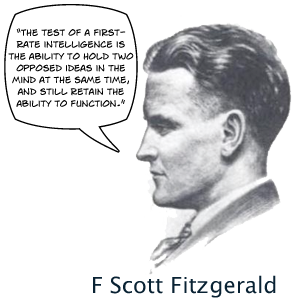Iguanas, leopards and humans all share one thing in common, we all make first impressions. For an iguana, first impressions are primarily used to decide fight or flight. Leopards added the ability to have first impressions that include emotions. Humans topped this all with the incredible ability to screw it all up with complex reasoning.
The difference between these three systems is largely one of time. An iguana that takes an hour or two to make a first  impression of the hawk flying above rarely get that chance twice. As humans, forming a first impression in an hour or two will yield an incomplete answer, one that if not further informed could yield poor results. Yet making critical decisions based on first impressions is what we are often asked to do.
impression of the hawk flying above rarely get that chance twice. As humans, forming a first impression in an hour or two will yield an incomplete answer, one that if not further informed could yield poor results. Yet making critical decisions based on first impressions is what we are often asked to do.
Two of the biggest challenges with first impressions lie in psychological principles known as cognitive dissonance and confirmation bias. How we deal with these concepts largely determine how long our first impressions will remain our complete impression.
Cognitive dissonance is that feeling you get when you believe two conflicting things to be true at the same time. It is a very uncomfortable feeling, one that often has to be resolved. Let’s say you’ve developed a first impression of someone that labels them as trustworthy. The first time they do something that indicates otherwise you will have to reconcile what this means. Was it a one-off act or was your first model incorrect?
That’s where the second part comes in. Confirmation bias is that human tendency we all have to want to view new information in a way that confirms our current opinions. If we think well of a person, we will treat their sarcasm as humor rather than insult.
 Take an interview for example. Most people will make up their mind about a candidate in the first 10 minutes – a little long for an iguana and way too short for a meaningful human interpretation. Next time you give one watch what you do with the next 20 minutes. Let’s say that somewhere after that 10 minute mark you asked the question “What do you like to do outside of work” and they responded with “I’m a competitive marathon runner”. If you have already given the guy the thumbs up you will likely think “Excellent, this guy knows what it means to practice and compete. He will need that in this role.” If thumbs down was the verdict so far you might think “I bet with all of that training and competing he won’t be able to put in the necessary time to do his job well.”
Take an interview for example. Most people will make up their mind about a candidate in the first 10 minutes – a little long for an iguana and way too short for a meaningful human interpretation. Next time you give one watch what you do with the next 20 minutes. Let’s say that somewhere after that 10 minute mark you asked the question “What do you like to do outside of work” and they responded with “I’m a competitive marathon runner”. If you have already given the guy the thumbs up you will likely think “Excellent, this guy knows what it means to practice and compete. He will need that in this role.” If thumbs down was the verdict so far you might think “I bet with all of that training and competing he won’t be able to put in the necessary time to do his job well.”
In as much as that happens in a short 30 minute time frame, it has also been demonstrated that human discomfort caused by cognitive dissonance and our ego-centric comforting processes of confirmation bias can cause those first impressions to last a very long time, fair or not. This is especially true once your internal first impression becomes external. It is much easier, although still difficult, to change an opinion of someone if you never told anyone else your opinion. However, once you let others know what you think it becomes increasingly difficult because now to change your mind means you have to demonstrate to others that your first instincts were wrong.
As I have grown older and appreciated the power and pain that comes with the first impression, I have discovered two very important principles that help me cope with this most human of instincts.
- As a person who makes the initial judgements – Despite how difficult this is for me, I really work hard at keeping my first impressions to myself. There are very few occasions that communicating these thoughts is beneficial to others. Let others make their own initial judgements. This requires a conscious effort on my part.
As the internet has proven, humans have a tendency to want to tell everyone how much we initially think about something as soon as we experience it. If the experience is the totality of the impression, like a recent trip you took, no problem. If you are dealing with something that is likely to form and change like a person’s ability to perform a job, I find it best to keep first impressions to myself, or at the very least if someone asks let them know the incompleteness of my impression.
- As a person who will create a first impression – I now take into account the criticality of making the right first impression. I used to think “Don’t worry about it. Over time they will get to know the real me.” While that is absolutely true I also don’t want to fight an uphill battle if I make a poor first impression. Notice I didn’t say good or bad, but rather poor. Our job is not to give someone a good impression, it is to give a true impression so that they can build models that will help them adapt to you. If you are a jackass, I think it would be a poor first impression to indicate otherwise.
Getting ready to start a new job next week, I am keenly aware of how critical this week will be if for no other reason than the first impressions that will be made. In the second part of this column I’ll share one of the critical first impression tests that I discovered from my friends in the waning days of my previous job.
Today’s Question
Do you place any conscious thought into how to make the most accurate first impressions?






